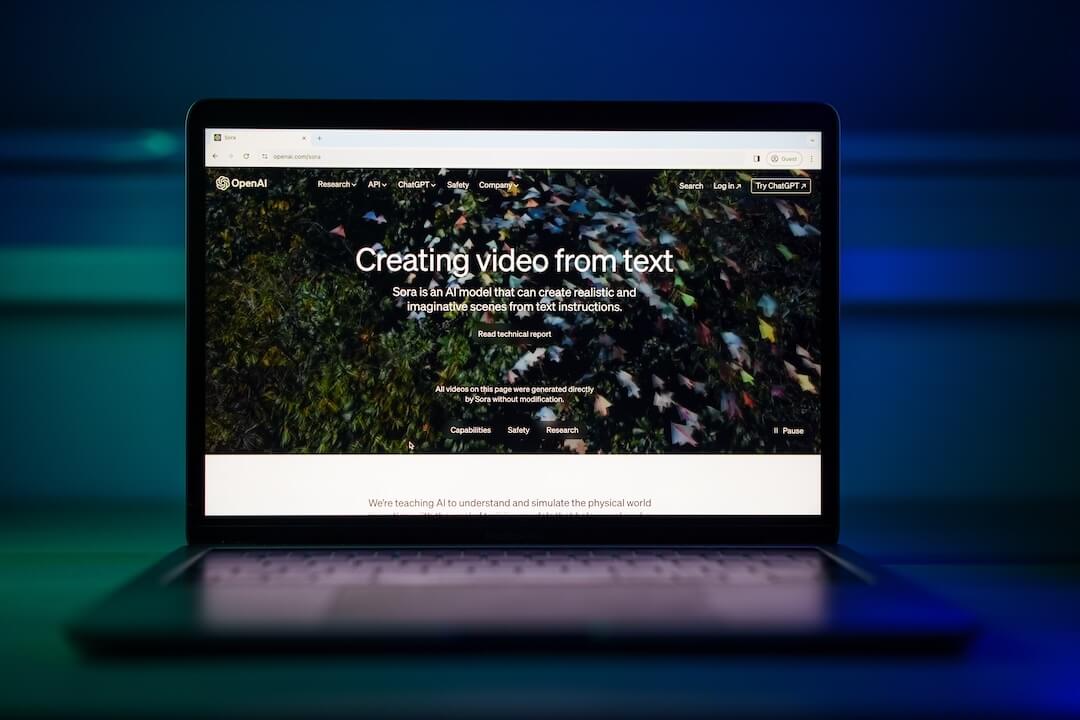The Impact of OpenAI's Sora Text-to-Video Tool on Journalism and Society
Kernekoncepter
OpenAI's Sora text-to-video tool poses significant challenges to journalism and society due to its potential for misinformation and manipulation.
Resumé
OpenAI recently introduced the Sora text-to-video tool, garnering mixed reactions from experts. Concerns arise regarding the tool's impact on media literacy, misinformation, and content authenticity. The technology showcases impressive capabilities but also raises ethical dilemmas surrounding its use in journalism and society. AI-generated content could revolutionize news production but also introduce new risks that require careful consideration.
Tilpas resumé
Genskriv med AI
Generer citater
Oversæt kilde
Til et andet sprog
Generer mindmap
fra kildeindhold
Besøg kilde
www.poynter.org
How Sora, OpenAI’s new text-to-video tool, could harm journalism and society - Poynter
Statistik
"It looks really good for their first try."
"It took several versions of DALL-E and Midjourney to produce realistic images."
"We’re usually looking at a small screen while we’re doing three other things."
"It took a lot of time, expertise, and money to create fake videos."
"Being able to stop and check someone’s bio can probably catch 99% of AI content that you’re going to see."
Citater
"People are going to say, 'Oh, that is actually AI-generated.'" - Alex Mahadevan
"I don’t feel like we’re going to get caught again by this onslaught of Silicon Valley." - Tony Elkins
"We need that." - Alex Mahadevan
Vigtigste indsigter udtrukket fra
by Ren Laforme kl. www.poynter.org 02-20-2024
https://www.poynter.org/tech-tools/2024/openai-sora-effects-journalism-democracy-misinformation/
Dybere Forespørgsler
How can news organizations effectively navigate the challenges posed by AI-generated content?
News organizations can effectively navigate the challenges posed by AI-generated content by implementing several key strategies. Firstly, they should invest in training their staff to understand and utilize AI tools responsibly. This includes educating journalists on how to verify information generated by AI, spot deepfakes or manipulated content, and maintain ethical standards in reporting.
Secondly, news organizations should establish clear guidelines and protocols for using text-to-video tools in journalism. These guidelines should outline best practices for verifying AI-generated content, disclosing when such technology is used in storytelling, and ensuring transparency with audiences about the origins of the content.
Additionally, collaboration with tech experts and researchers can help news organizations stay ahead of emerging technologies and potential threats posed by AI-generated content. By fostering partnerships with experts in artificial intelligence, journalism institutions can better understand the capabilities of these tools and develop strategies to counter misinformation or manipulation.
Lastly, continuous monitoring of industry trends and advancements in AI technology is essential for news organizations to adapt quickly to changes in the media landscape. By staying informed about new developments in text-to-video tools and other AI applications, journalists can proactively address challenges while leveraging these technologies to enhance their reporting capabilities.
What measures should be implemented to ensure responsible use of text-to-video tools in journalism?
To ensure responsible use of text-to-video tools in journalism, several measures should be implemented:
Ethical Guidelines: News organizations must establish clear ethical guidelines governing the use of text-to-video tools. These guidelines should emphasize accuracy, transparency with audiences regarding the use of AI-generated content, and adherence to journalistic principles.
Verification Protocols: Implement robust verification protocols for any video content created using text-to-video tools. Journalists must rigorously fact-check information presented through these videos before publishing them as part of a story.
Disclosure Policies: Develop policies that require disclosure whenever an article or video contains elements generated through artificial intelligence technology. Transparency is crucial for maintaining trust with readers/viewers.
Training Programs: Provide comprehensive training programs for journalists on how to effectively use text-to-video tools while upholding journalistic integrity standards. Training should include identifying deepfakes or manipulated videos produced through AI algorithms.
5 .Collaboration with Tech Experts: Collaborate with experts specializing in artificial intelligence ethics or digital forensics who can offer guidance on navigating potential pitfalls associated with using text-to-video technologies.
How might the rapid advancement of AI technology impact societal trust in media sources?
The rapid advancement of AI technology has significant implications for societal trust in media sources:
1 .Deepening Misinformation Concerns: The proliferation of sophisticated deepfake videos created through advanced AI algorithms could erode public trust further if not properly addressed.
2 .Challenges Verification Processes: As more realistic fake videos become prevalent due to advancements like Sora from OpenAI , it becomes increasingly challenging for individuals (including journalists)to discern between authentic footage & fabricated ones.
3 .Increased Reliance on Fact-Checking Tools: With rising concerns over authenticity & credibility fueled by advanced AIs,text -to -video tool users may need rely more heavily on fact-checking platforms like PolitiFact & Snopes which could potentially lead society towards greater skepticism towards all forms media including traditional outlets.
4 .Potential Polarization Effects: If misused,AI-powered disinformation campaigns could exacerbate existing political divisions within societies leading people into echo chambers where they only consume information that aligns w/their beliefs thus undermining objective truth-seeking behavior
In conclusion,the rapid evolution&deploymentofAItechnologyinmedia production poses both opportunities&challengesforjournalismorganizations.It's imperative that stakeholders remain vigilant,collaborative,ðically driven inorder tomaintainpublictrustandintegrityintheever-evolvingmedialandscape
0
